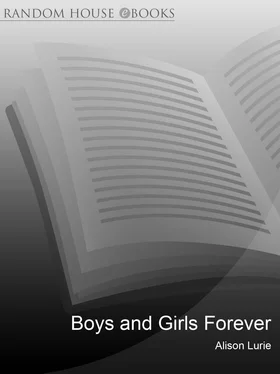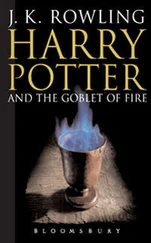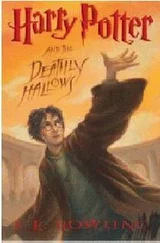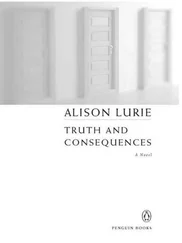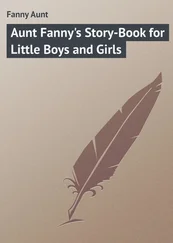THE year 2000 was the centenary of a famous and much-loved but essentially very odd children’s classic: L. Frank Baum’s The Wizard of Oz . Those who recall the story only from childhood reading, or from the MGM film, have perhaps never realized how strange the original book and its sequels are.
For one thing, the Oz books are far ahead of their time both scientifically and politically. They are full of inventions that would not appear on the market for most of the century, among them a robot man, an artificial heart and limbs, a television monitoring system, antigravity devices, and a computer-type news service. Oz is also, as several critics have noted, both a sort of socialist utopia and a deeply matriarchal and occasionally transsexual society. 1
Some of the reasons for this may lie in Baum’s own history—and also in that of his wife. As a child in Chittenango, New York, Frank Baum (he disliked his first name, Lyman, and never used it) did not go to school; instead he remained at home under his mother’s care and was educated by tutors. But when he was twelve, his father, a successful banker and oil executive, hoping to toughen Frank up and cure him of his “daydreaming,” 2sent him to the Peekskill Military Academy. Baum was miserable there for more than a year, and the only results of the experiment were a physical (and possibly also psychological) breakdown, and a lifelong aversion to both formal education and the military.
Back home on the family estate, Rose Lawn, Baum continued his studies. He also read widely, published a neighborhood newspaper on his own printing press, and put on plays with his brothers and sisters. Gradually he developed an intense and lifelong fascination with the theater, and in 1878 he began to work as a professional actor. Four years later his father bought him a small dramatic company, and Baum was soon adapting and starring in a romantic melodrama, The Maid of Arran .
In 1881, when Baum was twenty-five, he fell in love with a twenty-year-old Cornell sophomore. Maud Gage was the youngest daughter and favorite child of one of the most famous feminists in America, Matilda Gage. Together with Elizabeth Cady Stanton and Susan B. Anthony, Matilda had just begun to publish a groundbreaking three-volume History of Woman Suffrage (1881–89). She was prominent in the radical wing of the suffrage movement, and for years had spoken out not only for women’s right to vote and the abolition of slavery, but against unrestrained capitalism, established religion, and ethnic and racial oppression. She was especially concerned with the wrongs suffered by Native Americans, and enthusiastic about the system of government practiced by the Iroquois Confederacy, in which men and women were near-equals. (Eventually, in gratitude for Gage’s efforts on their behalf, the Mohawk nation adopted her into their wolf clan and gave her the name She-Who-Holds-the-Sky.)
Matilda Gage’s husband, Henry Hill Gage, appears to have been something of a nonentity. He was a successful merchant, able to provide his family with an impressive white-columned mansion in Fayetteville, New York; but I could find no record of what he thought of his wife’s political and literary activities.
As time passed, Matilda Gage’s ideas became too radical for both Anthony and Stanton, and in 1890 she was forced out of the National Woman Suffrage Association, which she had helped to found in 1869. Later she was partially written out of feminist history: a recent PBS documentary on Anthony and Stanton hardly mentioned her.
Frank Baum met Maud Gage in 1881 at a Christmas party, and he soon began calling on her and courting her. A few months later he proposed, and Maud accepted him at once, without first consulting her parents—an unusual step at the time. When Matilda Gage heard the news, she was not pleased; she exclaimed, “I won’t have my daughter be a darned fool and marry an actor.” Maud replied, “All right, Mother, if you feel that way about it, good-bye.” 3Faced with a stubbornness equal to her own, Matilda laughed and backed down. The couple was married in the family home in Fayetteville, near Syracuse, in November 1882, less than a year after their first meeting.
In a sense Matilda Baum was right; from a practical point of view it was a foolish marriage. It would be many years before Frank Baum began to be financially secure, and at first he failed or barely survived in one occupation after another: theater owner, newspaper editor, dry-goods merchant, traveling salesman, and trade-magazine publisher. After Baum’s father lost most of his fortune and died in 1887, Frank and Maud were often on the edge of poverty. Fortunately, where Baum was dreamy, easygoing, and impractical, Maud, like her mother, was what at the time was known as a New Woman: independent, freethinking, strong willed, and clearheaded. She also had a quick temper. Later in her life she maintained that the couple had always lived in peace and harmony, but as one of Baum’s early biographers reports,
. . . those who knew the family best felt that this was true only because Frank, from the time of their marriage until his death thirty-seven years later, allowed her to have her own way with the household, the children, and the family purse. 4
After the marriage Matilda Gage and her daughter remained close, and when Baum and Maud moved to Chicago in 1891 with four small boys, Matilda came to stay with them every winter and help take care of the children. But she did far more than this for Baum. It was she who first encouraged her son-in-law to write down the tales he had been telling the neighborhood children, and send them to a publisher. According to Angela Carpenter, “Frank could not believe anyone would want his stories, but Maud said firmly, ‘Mother is nearly always right about everything.’” 5So he sent off the manuscript of his first children’s book, Mother Goose in Prose; it was accepted at once and became a best-seller.
Possibly these events convinced Baum of the value of his mother-in-law’s opinions; or perhaps he was already convinced. Earlier, when he was editing a failing newspaper in South Dakota, he published Maud Gage’s “Manifesto” of women’s rights, and wrote in favor of votes for women. Later, his books for children, especially the fourteen Oz books, would reflect many of Matilda Gage’s most radical ideas.
Among Matilda Gage’s striking and original views was her belief in a prehistoric matriarchal society, the “Matriarchate.” In Woman, Church, and State (1895), partly written when she was living in Chicago with Baum and his family, she declared that all ancient communities had been ruled by women.
A form of society existed at an early age known as the Matriarchate or Mother-rule. Under the Matriarchate, except as son and inferior, man was not recognized in either of these great institutions, family, state or church. A father and husband as such, had no place either in the social, political or religious scheme; woman was ruler in each. 6
In this golden age, according to Gage’s biographer, Sally Rosch Wagner, “Far from woman using her power over man oppressively, Gage maintained that never was justice more perfect, never civilization higher than under the Matriarchate.” 7
Like other radical feminists in both the nineteenth and twentieth centuries, Matilda Gage believed that if women held political power the world would be a better place. Women leaders would be kind, wise, just, fair-minded, and nonviolent. Today, in an era that might be designated as AMT (After Margaret Thatcher), this belief seems naive, but at the time it was widely accepted in feminist circles. In 1915 Charlotte Perkins Gilman, a contemporary of Matilda Gage, published a fantasy novel called Herland , which portrays a peaceful and happy all-feminist society.
Читать дальше
